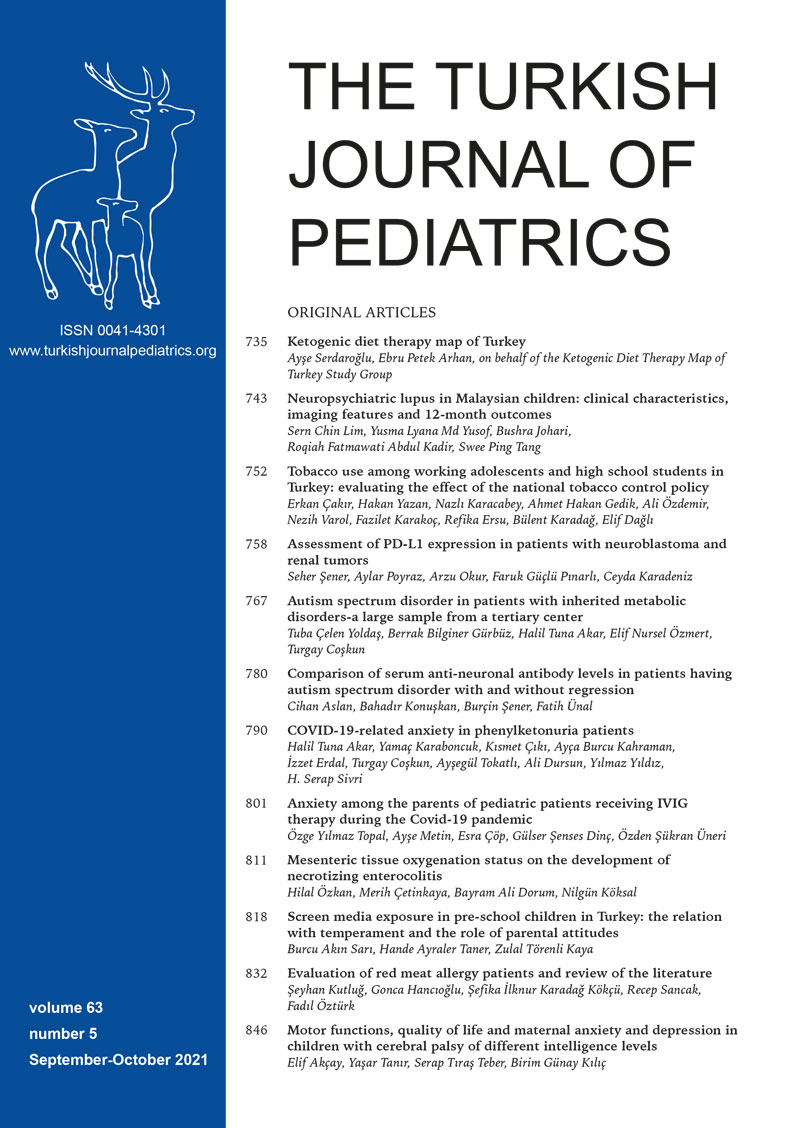Abstract
Background. Neuropsychiatric lupus (NPSLE) serves as a marker of severe disease in children with juvenile onset systemic lupus erythematosus (JSLE). This study aims to characterise the clinical and imaging features at diagnosis; and outcomes after 12 months in Malaysian children with NPSLE.
Methods. A retrospective study of all NPSLE patients seen at the Pediatric Rheumatology Unit, Selayang Hospital from January 2004 to May 2017.
Results. Twenty-eight (19.8%) of 141 JSLE patients had NPSLE with a median presenting age of 10 years (IQR 9 - 12), median follow-up of 7 years (IQR 4 - 11) and female: male ratio of 3.7:1. Twenty-three patients had single episodes of NPSLE and five patients had two distinct episodes each. The mean disease activity score (SLEDAI- 2K) was 24.9±11.8 at presentation with 81.8% having high disease activity (score > 12). Majority (60.6%) present with NPSLE within the first year of SLE diagnosis whilst the remainder occurred at a median of five years (IQR 3-7) post-SLE diagnosis. Majority (75.8%) had central nervous system (CNS) involvement commonly presenting with seizures, delirium and visual complaints whilst 24.2% had peripheral nervous system (PNS) involvement. Frequent accompanying features included hypocomplementemia, acute cutaneous lupus and lupus nephritis. Autoantibodies were common; ANA (100%), anti-dsDNA (78.8%) anti-RNP (39.4%) and anti-Sm (39.4%). Abnormalities were seen in 85.7% of the magnetic resonance imaging (MRI) studies performed, predominantly supratentorial white matter hyperintensities on T2 images whilst cerebrospinal fluid examination was normal in the majority. All patients with CNS involvement received corticosteroids with immunosuppressive therapy: Cyclophosphamide (20), Rituximab (2). Treatment for PNS involvement included corticosteroids with Azathioprine (6) or Mycophenolate mofetil (2). At 12 months post-NPSLE, majority (85.7%) recovered without any neurological sequelae.
Conclusions. Juvenile-onset NPSLE presents with a myriad of clinical features. It is associated with high disease activity and non-specific MRI features. With early diagnosis and treatment, the majority had good prognosis.
Keywords: MRI, neuropsychiatric, systemic lupus erythematosus
Copyright and license
Copyright © 2021 The Author(s). This is an open access article distributed under the Creative Commons Attribution License (CC BY), which permits unrestricted use, distribution, and reproduction in any medium or format, provided the original work is properly cited.














